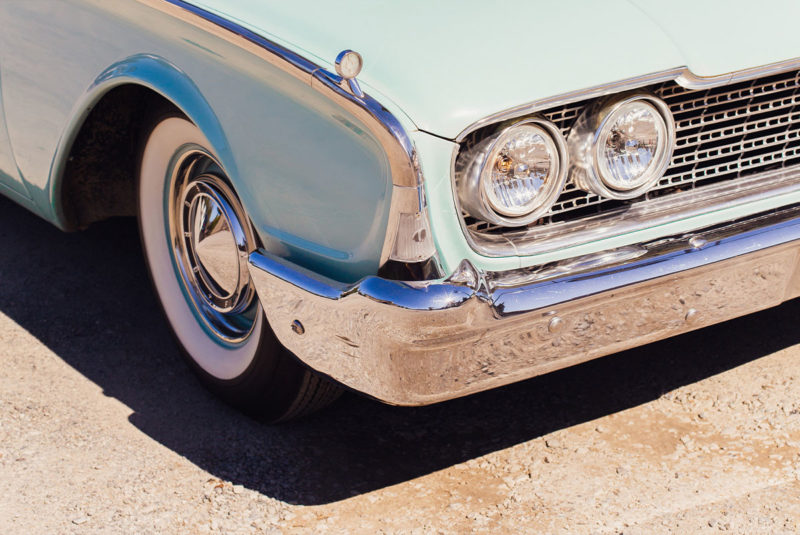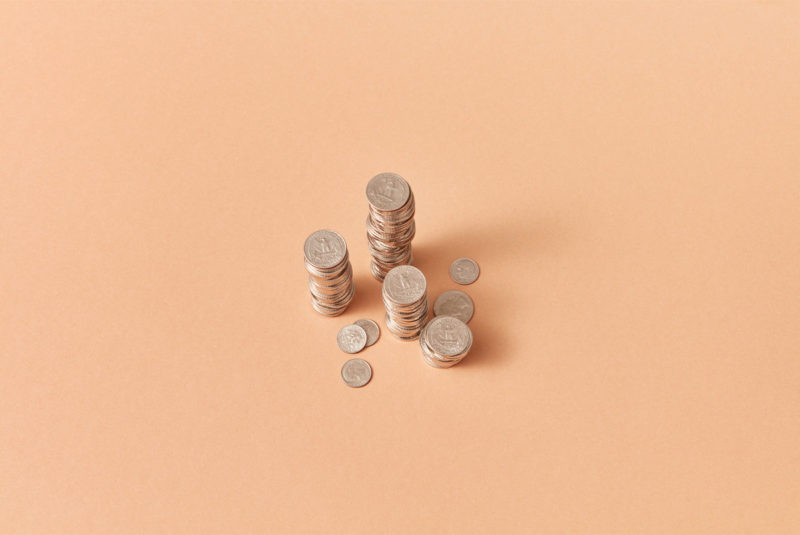Negotiating at a car dealership is a big part of getting the best deal. But not many people like negotiating – it can get emotional, and the confrontation is real!
Plan out buying a new car to avoid making common mistakes that result in excess debt (like rolling over the loan balance on your current car to your new loan or telling the dealer you need financing before picking out your car.)
These nine tips can help you prepare for the car buying process and help you get the best deal possible.
1. Buy a Car You Can Afford
We know it can be easy to fall in love with a car – the sleek look, the color, the features – but you’ll need to make sure you can afford it.
Know your budget
If you’re buying a car with cash, check your bank accounts and calculate the total price you can reasonably afford to pay. If you’re buying a car with an auto loan, compare your current monthly expenses to your income and figure out the monthly auto payment you can afford.
Use the Edmunds auto loan calculator to estimate the auto payment and loan amount needed based on the price of a car. Once the auto payment matches your budget, you’ll know the max you can afford to pay.
Remember, you’ll also pay for the car registration, taxes and fees, so expect to pay more. Don’t forget to think about the size of the down payment you can afford. You’ll pay that upfront.
Factor in car ownership costs
When calculating your budget, include other car owner expenses like fuel, maintenance, auto insurance and repairs.
Insurance for newer cars can be more expensive than older ones. But older cars may come with more upkeep and repair expenses.
Also, take into account a car’s fuel economy, gas prices and how much you’ll be driving when you budget monthly fuel costs.
Know the value of your trade-in
If you’re trading a car in, know how much it’s worth before going to the dealer. Check Kelley Blue Book or NADA to see what your car’s estimated trade-in value is.
Do you still have a car loan on your trade-in? Figure out if you’re upside-down on your loan by looking at your used car’s loan-to-value (LTV) ratio:
- Good to go: If your car’s trade-in value is worth more than the loan balance, you’re in good shape. The difference between the trade-in value and loan balance will be subtracted from the new car’s price, meaning you’ll get money off.
- Upside-down: If you owe more than your car’s trade-in value, you’ll have to pay the difference with cash, a new loan or roll it over into your new car loan (which is not recommended).
If you’re upside-down, you may want to pay off your loan first and then save up for a larger down payment on your next car. Rolling over your old loan into your new one means continuing to pay for (and pay interest on) a car you’re no longer using.
2. Do Your Research
Before going to a dealership to purchase a new car, you should look at your financial situation and research the right car for you.
If you’re getting a car loan, start by checking your credit scores and getting your free credit reports. Your credit scores heavily impact loan approval and the interest rate you’ll receive. Higher credit scores mean better loan approval odds and lower interest rates. And checking your scores will give you a better idea of the loans you may qualify for.
Next, figure out what kind of car fits your budget and needs. Answer these questions:
- Who’s going to be in the car with you and will specific safety features be needed?
- What are you going to be using the car for?
- What kind of driving are you going to be doing and how often?
- How long do you want to have this car for and does mileage matter?
- Do you want it to be new or used?
Use websites like Kelley Blue Book, Edmunds and J.D. Power to compare cars, prices and ratings online before going to a dealer.
Buy certified pre-owned
If you’re not looking for a brand new car, get the next-best thing and buy a certified pre-owned vehicle. They go through a rigorous certification process and come with the added protection of manufacturer extended warranties.
Certified pre-owned vehicles tend to be in better shape and have lower mileage due to being loaned out or leased. But they also come with higher price tags than regular used cars.
3. Shop Around
After you choose the right type of car for you, shop around for the best price. Compare prices on websites like Autolist, AutoTrader, CarMax and Carvana as well as different dealership websites.
Some of the best negotiation wins come from having other car listings to justify why you want a lower price. If a dealer knows you’re willing to walk away because you can get a better deal elsewhere, they may be more willing to negotiate.
Consider looking at out-of-town dealers, too. Cars are priced by local demand, and you might be able to get a better deal in a nearby zip code. Just know that if you cross state lines, you’ll pay different taxes.
4. Get Preapproved for a Loan
You don’t have to get financing through the dealer. Talk to your local bank or credit union about getting preapproved for an auto loan.
During the preapproval process, lenders check your credit history and send you a letter detailing the loan amount and terms they may offer if you applied for a loan.
Even if you decide to go with dealership financing, taking the preapproval letter to the dealer can help you negotiate loan terms. Dealers aren’t required to show you the best loan offers available, so that preapproval letter can help you get a lower interest rate.
If the loan amount and terms aren’t what you want, increase your credit scores and get another loan preapproval before you go to the dealer.
5. Beware of Longer-Term Loans
It can be tempting to extend your loan repayment period to hit your monthly car payment budget, especially if it affords you a fancier model. According to Edmunds, 73% of new car buyers in 2022 are extending their loan repayment period to longer than 5 years – 33% more than the number of buyers in 2010.[1] That’s a lot of people stuck repaying a long loan.
Getting a longer-term loan will cause you to spend more in interest, making the car more expensive to finance in the long run.
Long repayment periods can also make it harder to work toward other financial goals or buy a different car if your circumstances change – especially if you still owe a lot of money on your loan. Do your best to stick to your budget and look for loans with a 5-year repayment period or less.
6. Say the Right Things at the Right Time
Doing your research, shopping around and getting preapproved can help you get the best deal on a new car. But if you say the wrong thing to the dealer while negotiating or show up at the wrong time, you can wave goodbye to all of your hard prep work.
Wait to mention your trade-in or financing
Even if a dealer asks upfront, don’t mention your trade-in or your desire to get a car loan. Wait until you’ve negotiated the lowest total car price before you talk about your trade-in or tell them you need financing.
Let’s look at an example:
Say a car’s initial price is $25,000, and the dealer (in their mind) hopes to not go lower than $20,000. If you prematurely tell them you’re trading in a car worth $3,000, the dealer might offer $23,000 with your trade-in, bringing it down to their desired lowest price of $20,000. You think you’ve gotten a good deal, but it may not be the best.
But if you negotiate the price down to $22,000 first, and then mention your trade-in, you could end up getting a price under the dealer’s low end of $20,000.
Save money with good timing
Many car salespeople have set sales goals for the end of each month and quarter. Plan your visit to the dealer close to these calendar times, and you may get a better deal or extra savings if they still need to reach their quota.
Pro tip: Don’t go to the dealer just before they close. Contrary to popular belief, this won’t always get you a good deal if the salesperson is in a rush to leave. They’ll most likely tell you to come back the next day to finish the sale.
Know the deals
Some car dealers and automakers have car buyer programs and special offers to help move inventory quickly and make buying a car more accessible.
Look for offers online before heading to the dealership. After you’ve negotiated the final car price, ask the dealer about any offers or programs you qualify for or mention any you found online to bring the price down even more.
7. Negotiate the Out-the-Door Price, Not Monthly Payments
Speaking of saying the right things, don’t tell the dealer what monthly payment you’re looking for. If you want the best deal, start negotiations by asking the dealer what the out-the-door price is. Then, negotiate based on that number, not your monthly payments.
FYI: The sticker price isn’t the total price of the car – it’s just the manufacturer’s suggested retail price (MSRP). Remember those taxes and fees we said you’ll have to pay when buying a car? Those are included (on top of the MSRP) in what’s called the out-the-door price.
So why negotiate based on the out-the-door price? Dealers can extend loan repayment terms to hit your target monthly payment while not decreasing the out-the-door price, and you’ll end up paying more interest in the long run.
If you’re not sure how much you should negotiate off a new car’s price, find the lowest price for the same car in your area and work your way to a fair price. Both you and the dealer are entitled to a fair offer – but you’ll likely end up paying a little more than you want and the dealer will likely get a little less than they want.
8. Know What You Can and Can’t Negotiate
Always start negotiations by asking what the out-the-door price is and go from there. If the dealer isn’t going low enough, you may be able to negotiate some specific items to get closer to your desired price.
| CAN Negotiate ✅ | CAN’T Negotiate 🛑 |
| Documentation fee | Sales taxes |
| Dealer preparation fee | Title and registration fees |
| Transportation fee | Destination fee on new cars |
| Extended warranties or maintenance | Gap insurance and credit insurance |
| VIN etching on a new car | |
| Trade-in value | |
| Price of add-ons and extra features |
Keep in mind that some dealers take negotiations off the table, listing the MSRP and invoice price as-is. It’s a what-you-see-is-what-you-pay kind of price.
9. Opt-out of the Add-ons
Just because you’ve negotiated a deal doesn’t mean you’re home-free yet. You’ll likely be offered add-on options, like fancy technology packages, interior upgrades, extended warranties, gap insurance and other protection plans.
Ask yourself if the add-on is something you truly need before agreeing, as most of these offers can be added at a later date if you choose. The more you add on, the higher your price, and you’ll end up having to take out a larger loan. If you decide to purchase an add-on, negotiate that price, too.
Always Be Prepared
Cars are a major purchase, and you don’t want to regret buying one – preparation is key!
Compare car prices around your area and always negotiate based on the out-the-door price. Don’t tell the car salesperson what your target monthly payment is or mention your trade-in until you’ve negotiated the final purchase price.
One more tip: If you feel like you aren’t getting the best car price, don’t be afraid to walk away and try somewhere else.
The Short Version
- Before going to a dealership to purchase a new car, you should look at your financial situation and research the right car for you
- If you’re not sure how much you should negotiate off a new car’s price, find the lowest price for the same car in your area and work your way to a fair price
- Don’t tell the car salesperson what your target monthly payment is or mention your trade-in until you’ve negotiated the final purchase price
Edmunds. “How Long Should a Car Loan Be?” Retrieved August 2022 from https://www.edmunds.com/car-loan/how-long-should-my-car-loan-be.html




